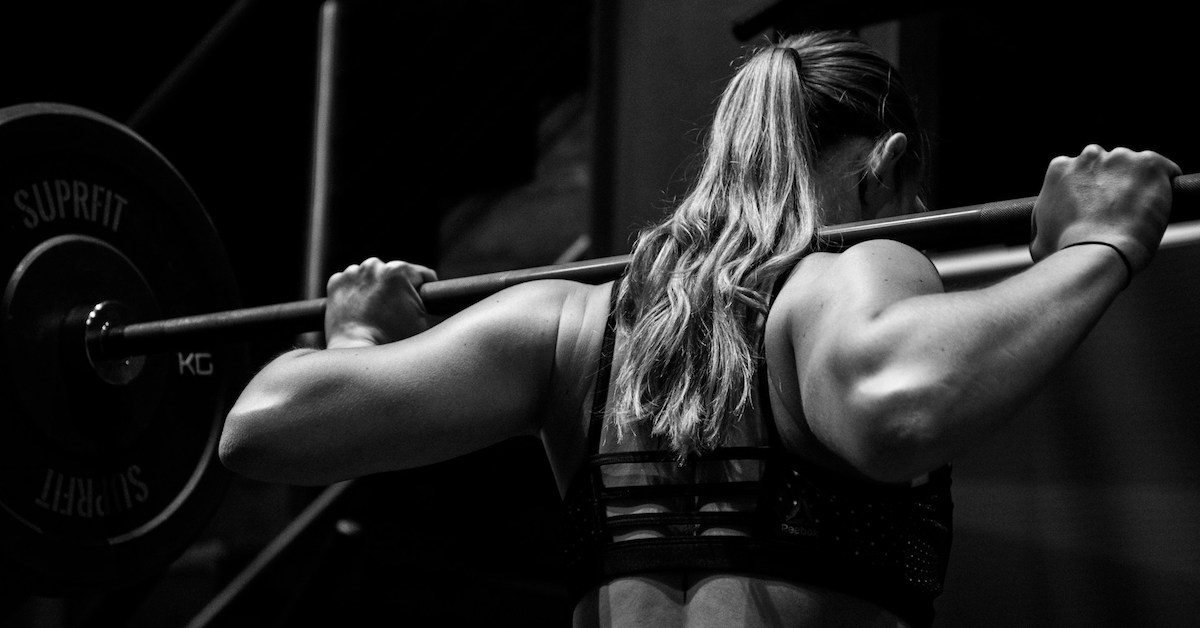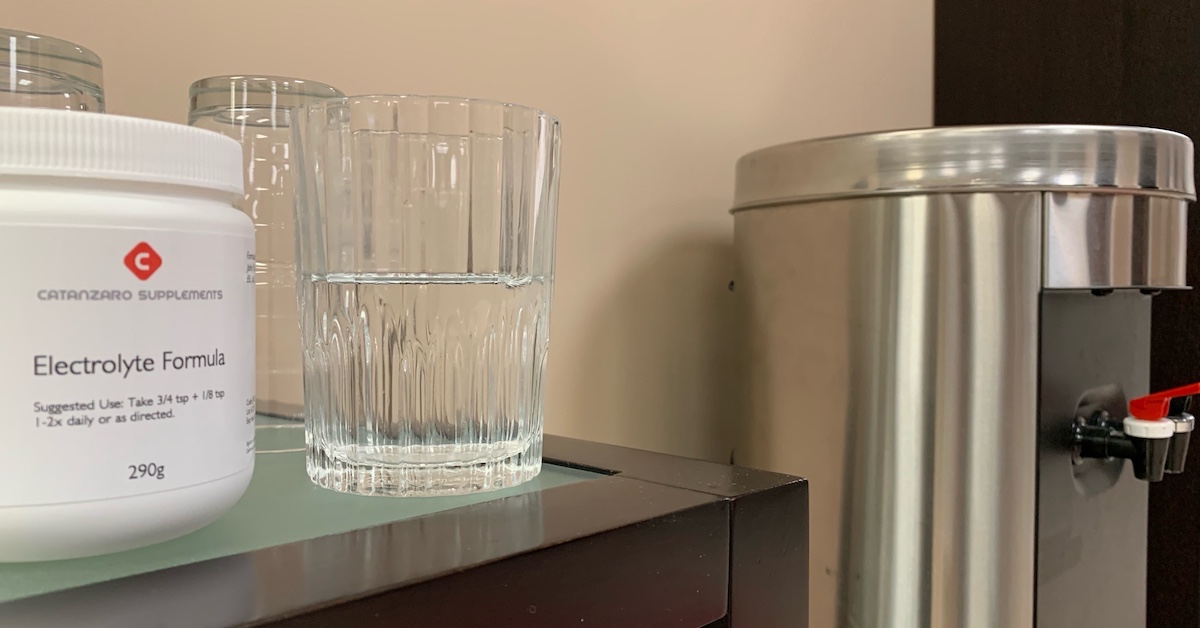One of the biggest challenges people face when traveling involves exercise. The two most common excuses are a lack of time and a lack of resources. But as we all know, where there’s a will, there’s a way! If you have a busy day filled with meetings or sightseeing, then get it over and done with early before work or play get in the way! What about if there’s no gym in your hotel? No problem, do it in your room – bodyweight and a water bottle is all you need. Today I will present you with two options for exercising when traveling.
Hotel Room
Here are exercises for the lower body, upper body and core that can be completed in your hotel room with nothing more than a water bottle and a bit of determination.
Lower Body
Whether you fly or drive to your destination one thing is for sure, you will be sitting! The hip flexors are the most tonic muscle in the human body, and traveling will serve to tighten them even further. A split squat is an excellent exercise to use because it will help stretch these muscles if performed correctly. The problem is that for some advanced trainees, body weight is not challenging enough. (Keep in mind that the training effect plummets significantly with repetitions above 20 or a time under tension that exceeds 60 seconds.) For these individuals, I recommend a single-leg squat with the rear foot elevated onto a chair or bed.
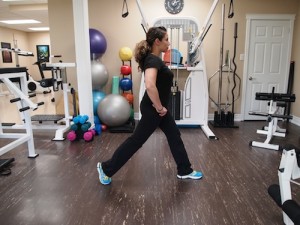
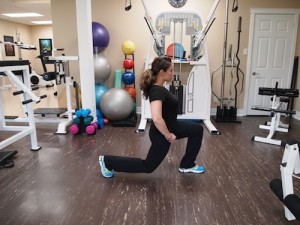
Split Squat – keep the chest up and shoulders back.
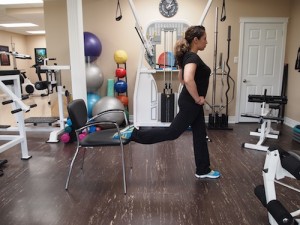

Single-Leg Squat – place the top of the foot (not the sole) on a chair or bed.
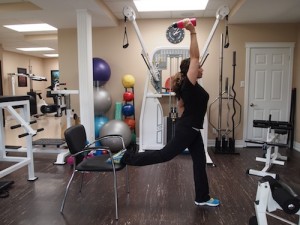
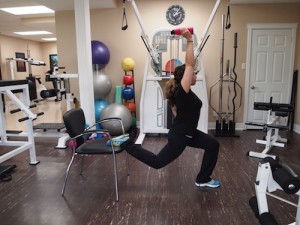
Statue of Liberty Squat – a more challenging version of the single-leg squat where one
If the hip flexors are short and tight on one end, more times than not the hip extensors are long and weak on the other end – your bottom end that is! For some
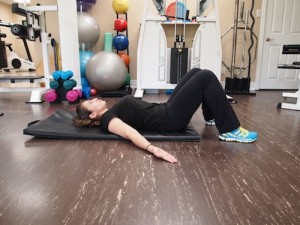
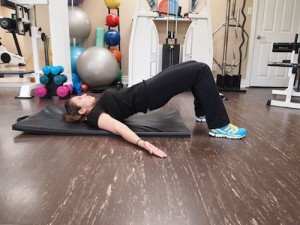
Supine Hip Extension – push through the heels and raise the hips upward.
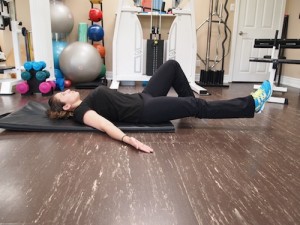
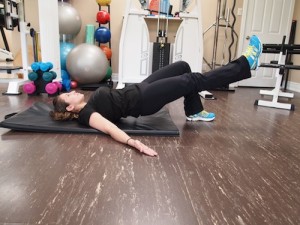
Supine Single-Leg Hip Extension – keep the hips level during the movement.
Upper Body
A classic exercise for the upper body that can be done just about anywhere is the push-up. The problem, of course, is that not everyone can do a “proper” push-up. Many people settle for a modified version where they pivot off their knees instead of their feet. Often, however, the form is sloppy with this movement. A much better alternative is a push-away done against a wall or counter.

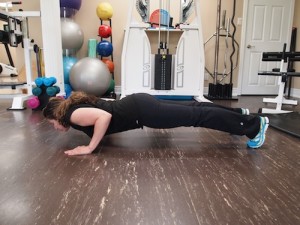
Push-Up – the closer the elbows are to the body, the more challenging the exercise becomes.
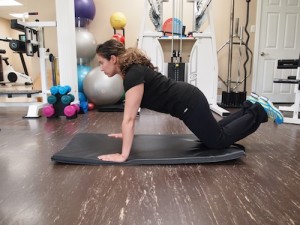
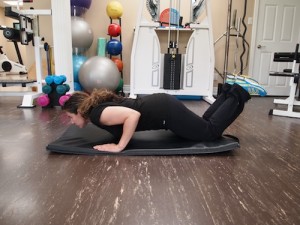
Modified Push-Up – do not allow the hips to touch the ground.
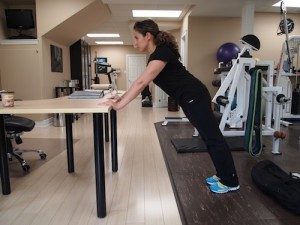
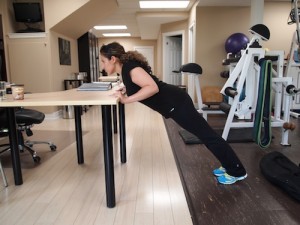
Push-Away – keep the back flat and core tight.
Unless you wish to promote a muscular imbalance, it is always wise to balance agonists with antagonists (i.e., opposite body parts.) In this case, we will follow a push with a pull, and the perfect exercise for the latter is a one-arm elbow-out row using nothing more than a water bottle. What if you don’t have a water bottle? Well then, straddle a door, grab on to the handles, and row yourself to it. Instead of a push-away, I guess you can consider this as a “pull-toward”!
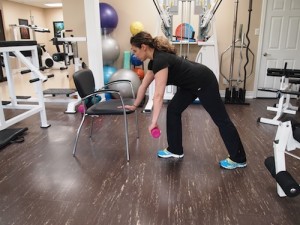
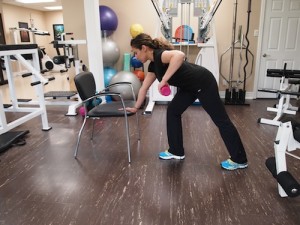
One-Arm Elbow-Out Row – keep the body still (do not twist).
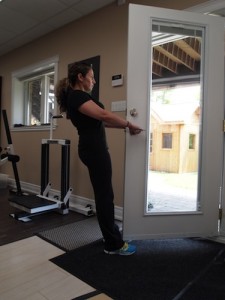
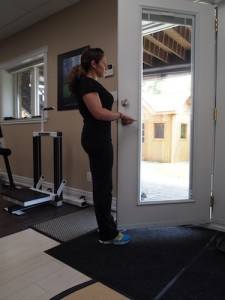
Door Row – the further you lean back, the more challenging the exercise.
If you are adventurous, try wrapping a belt around both sides of a door handle, and then lean back. Make sure the door is sturdy enough to handle your weight!
Core
When most people hear the word “core”, they automatically think abdominals and nothing else. Only muscles that can be seen in the mirror count! And how to do most people go about training these muscles? With a countless number of sit-ups, crunches, knee-ins and leg lifts. These dynamic movements may not be so friendly to the other areas of your core, like your lower back, especially after you’ve been sitting on a plane for a while! Research shows that there is a more effective way to maximize abdominal activation while minimizing hip flexor activity. It’s called the side bridge exercise, and I have a special way of doing it…
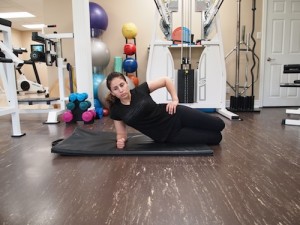
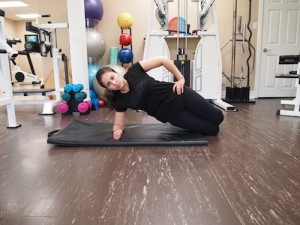
Side Bridge (Knees Bent) – an easier version.
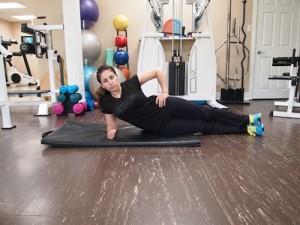
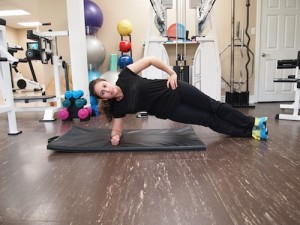
Side Bridge (Legs Straight) – a more difficult version.
A hybrid movement is when you combine two movements into one. For instance, by combining the side bridge exercise with either a rear deltoid raise, external rotation, or lateral raise, you can kill two birds with one stone (i.e., work the core and shoulder stabilizers at the same time.) And you do not need much weight for this method. Trust me, a water bottle is more than enough!
The paradox with this hybrid movement is that it makes the exercise more challenging while making it easier. What do I mean by that? Well, many people struggle to keep their hips up and torso straight during the side bridge. I have found that if you add a shoulder movement like the ones mentioned above, it actually diverts one’s attention to complete a prescribed number of repetitions with the weight rather than try to hold the bridge for a prescribed length of time. In the end, you end up performing longer without realizing it!

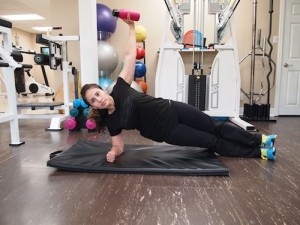
Side Bridge Rear Deltoid Raise – stop just shy of vertical at the top position.
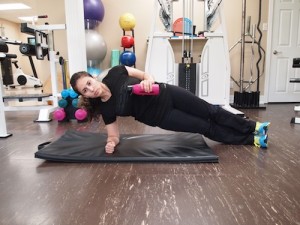
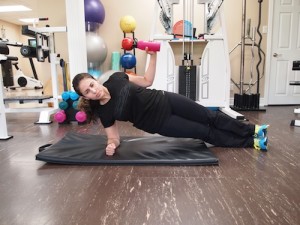
Side Bridge External Rotation – keep the elbow bent at 90 degrees.
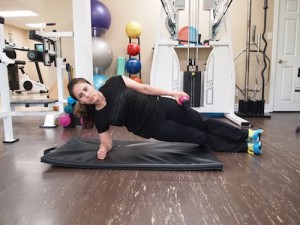
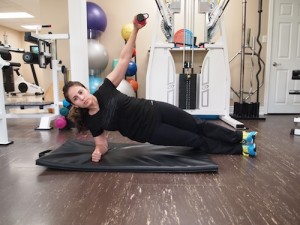
Side Bridge Lateral Raise – raise the arm until it is perpendicular to the body.
Now, there is a way to attack that six-pack “mirror” muscle in a back-friendly manner. I call it the reclining field goal exercise, and it’s a lot harder than it looks. The beauty of this exercise is that it can be done anywhere, it can easily be adjusted to challenge anyone at any fitness level, and it does not require a huge volume of dynamic movements that compress and degenerate your lumbar spine with each repetition. It’s a perfect exercise to do on the road.
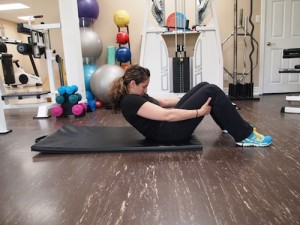
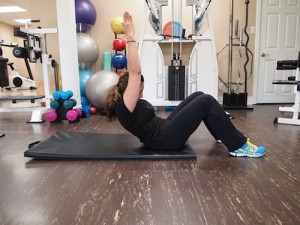
Reclining Field Goal – positioning the feet closer to the torso increases the challenge on this exercise.
And finally, if poor posture is an issue (and let’s face it, when is it not an issue?), then the prone cobra is part of the solution. This corrective exercise will help pull the shoulders and head back into proper alignment while working the often weak and neglected lower back muscles.
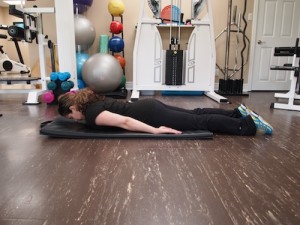
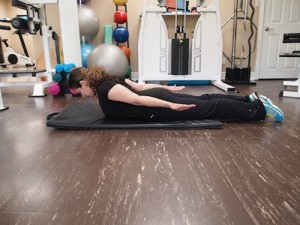
Prone Cobra – this is a combination of scapular depression (pulling the shoulder blades down), scapular retraction (pulling the shoulder blades together), and shoulder external rotation (rotating the arms outward).
Let’s put it all together now. Here’s what the plan looks like if you decide to train in your hotel room:
1. Split Squat or Single-Leg Squat
1-3 sets, 15-20 reps, pause for 1-2 seconds at the bottom of the movement
2. Two-Leg or Single-Leg Hip Extension
1-3 sets, 15-20 reps, pause for 1-2 seconds at the top of the movement
3. Push-Up or Push-Away
1-3 sets, 15-20 reps, pause for 1-2 seconds at the bottom of the movement
4. One-Arm Elbow-Out Row or Door Handle Row
1-3 sets, 15-20 reps, pause for 1-2 seconds at the top of the movement
5. Side-Bridge Series (Rear Deltoid Raise, External Rotation, Lateral Raise)
1-3 sets, 15-20 reps
6. Reclining Field Goal
1-3 sets, 10-12 reps, hold the contracted position for 5-10 seconds
7. Prone Cobra
1-3 sets, 10-12 reps, hold the contracted position for 5-10 seconds
The workout can be performed as a circuit, moving from one exercise to the next with minimal rest if you only have time to the 1 set. However, if you plan to perform more than 1 set, then pair opposite movements and complete all sets of that pair before moving onto the next group of exercises. For instance, pair exercise 1 and 2 together, 3 and 4 together, and 6 and 7 together. Exercise 5 will be done on its own (both sides, of course.)
Hotel Gym
Below is a machine-based circuit-training program that I present in my book The Elite Trainer. It features a series of exercises in rotation to work the entire body. You start with an upper body movement, followed by a lower body movement, followed by an upper body movement, then a lower body movement, and so on. This is
1. Chest Press
2. Leg Press
3. Lat Pulldown
4. Leg Curl
5. Shoulder Press
6. Abdominal Crunch
7. Arm Curl
8. Back Extension
9. Triceps Extension
10. Calf Raise
This is an excellent routine to use when traveling and all you have access to is a multi-station in your hotel. Perform 15-20 reps of each exercise for 1-3 sets (circuits). Make sure to use a controlled tempo of execution – 2 seconds up and 2 seconds down for each movement. The rest interval should be 30 seconds between exercises on the first circuit, 45 seconds on the second circuit, and 60 seconds on the third circuit. Rest 2-3 minutes between each circuit. If time is limited, even 1 circuit will suffice to maintain fitness levels while on vacation.
Other options do exist. Light-weight equipment that take up no space at all when traveling include the TRX suspension trainer and resistance tubing. I think these are excellent tools if you are constantly on the road; however, you must consider the cost. Tubing is relatively inexpensive but not so for the TRX.
Traveling is a part of our lives. For some people it’s a welcome rest from regular activity, for others it’s just another excuse to remain sedentary. There really is no reason why you should not train on the road. If a gym is available at your hotel, great! If not, no problem – you can train in your room. So go ahead and travel, but leave the excuses at home and stay active while you’re away!


